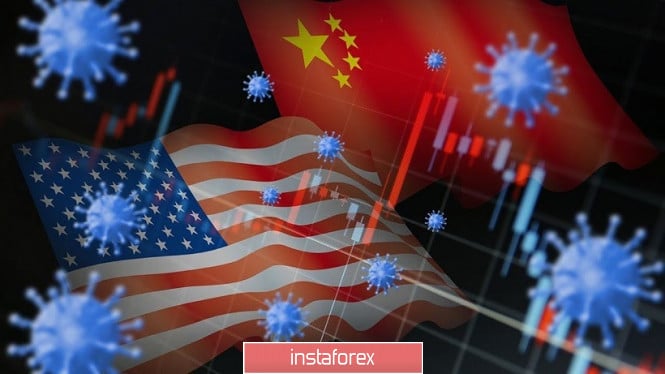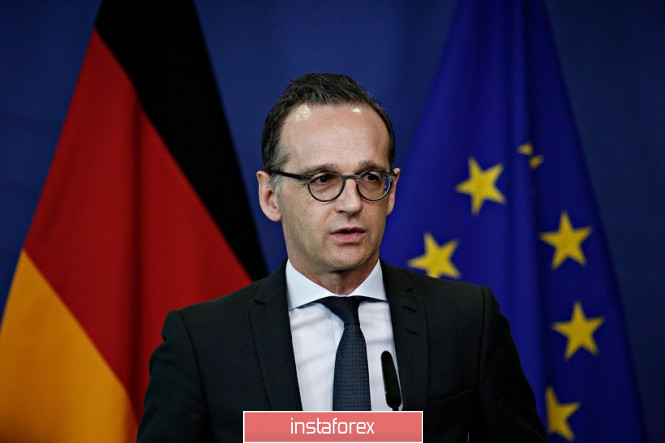Traders of the USD/JPY pair ignored the general weakening of the US currency, which was observed at the start of the new trading week. Despite the fact that other pairs of the major group showed increased volatility yesterday, the yen still fluctuates within a narrow range flat when paired with the greenback, without leaving the frame of the 107th figure. The pair has been in this price range for the third week, or to be more precise, since May 19. The case when "the top can't, the bottom doesn't want to" - the general fundamental background does not contribute to the growth of anti-risk sentiment, while both the yen and the dollar are under the yoke of their own problems. Market participants cannot grasp any argument of a fundamental nature in order to break out of the above price range. Even the US-China conflict, when examined in detail, does not look as unambiguous as at first glance.

Let me remind you that last year the USD/JPY pair reacted quite sharply to the process of trade negotiations between the United States and China - after all, the prospects for the global economy were at stake, as it was rightly believed then. The parties managed to conclude the first stage of the deal, but after a few months the world was faced with the most powerful coronavirus crisis, so now the financial world is already concerned about the prospects of the recovery process. The political tensions between Beijing and Washington are of concern in this context - after all, if the superpowers deploy hostilities in the economic field, the global economy will receive an additional blow that will exacerbate the negative consequences of the pandemic.
Such a small background allows us to understand why the pair (in particular) and the foreign exchange market (in general) essentially ignore the political conflict between the United States and China, while the dollar's reaction is short-term. For one simple reason: for all the tensions, the parties do not intend to review the trade deal concluded last fall. Of course, further dialogue is questionable - it is difficult to imagine that representatives of countries in the near future will sit down at the negotiating table as if nothing had happened. But on the other hand, experts did not expect any quick solutions here - even before the coronavirus it was clear that the United States would discuss the second part of the agreement after the presidential election. After all, if the White House is led by Joe Biden, the negotiation process may go in a slightly different vein.
In other words, the market is relatively calmly watching the "game" of the two superpowers, as the leaders of these countries bypass the most painful topic for traders. Pay attention to the reaction of the dollar index to recent events: following a press conference from Donald Trump, this figure slightly increased on Friday, showing a surge in anti-risk sentiment. But the index began to lose ground again when trading began on Monday. Toward the close of the European session, China reacted to Trump's words - and the dollar similarly tried to recover. But the index lost ground during the US session. All this suggests that traders only reflexively react to the corresponding news flow: the US-Chinese conflict (so far) cannot fundamentally change the existing alignment of forces in the foreign exchange market.

In addition, yesterday it became known that Germany intends to become a mediator in the conflict between the United States and China. According to German Foreign Minister Heiko Maas, during the six-month presidency of the European Union in the second half of this year, Germany "intends to make efforts to resolve the conflict between Beijing and Washington." According to him, the Europeans are not interested in the differences between these countries becoming insurmountable. He also confirmed that the planned EU-PRC summit will be held in Leipzig in September, which could become a platform for wider negotiations. This rhetoric of a German senior official put pressure on the dollar. Speaking directly about the pair, then the bears were able to organize a downward momentum, which, however, was limited to a daily low of 107.39.
In general, the fundamental picture for the pair consists mainly of three main components. Firstly, this is the US-Chinese conflict, and secondly, the weakening of quarantine measures in key countries of the world and riots in the United States. And if the first two factors cancel each other out (at least in the context of USD/JPY), then the latest events in the United States exert local pressure on the greenback. According to recent data, more than four thousand participants in the riots were detained in the United States, five people were killed. Trump called on American governors to use the National Guard to clean up the streets. At the same time, in a number of cities, police began to express solidarity with the protesters. In particular, a local sheriff joined in the protest in the town of Flint, in Michigan. Curfews have been imposed in at least 40 US cities.

On the one hand, riots in the United States have only an indirect effect on the foreign exchange market. Traders are concerned about the unprecedentedness of recent events - the protests over the murder of George Floyd are called the largest in the US in recent decades. President Donald Trump was even forced to take cover in a bunker when the rally was held under the walls of the White House. In other words, local protest actions have grown into something more, and this worries traders. But if the degree of incandescence decreases, this fundamental factor will quickly disappear.
To summarize the above, we can conclude that the pair will soon be trading in the flat in the near future and further: the upper price ceiling will be limited to 108.10 (two-month price high), while the support level is located at 107.00 - this is the line Kijun-sen on the daily chart. If we talk about the short term, here the technical picture is in favor of rising prices - on the 30-minute chart, the Ichimoku indicator generated a bullish Parade of Lines signal, and the price itself is between the middle and upper lines of the Bollinger Bands indicator. The intraday target for the upward movement is 107.90 (this week's high).
The material has been provided by InstaForex Company - www.instaforex.com